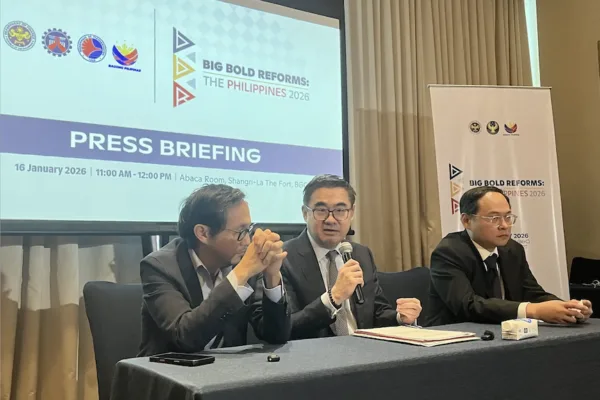Ever since the dawn of digital technology, the crucial need for protection has been apparent.
Whether it is a special date or a random sequence of letters and numbers, everyone has (at least once!) come across passwords — the most basic form of cybersecurity. Passwords guard sacred information and as digital services and devices continue to evolve, so should the effort in the protection and security of these data.

IMAGE CREDIT: https://opengovasia.com/
In a world that is becoming more digitally interconnected, cybersecurity is one of the most important aspects of any technological advancement. It safeguards private and sensitive information, actively protects against malicious cyberattacks, and provides a safe environment for everyday digital activities. With the rapid growth in the country’s digital adoption as well as Internet and mobile connectivity, it is therefore crucial to adopt cybersecurity advancements in the Philippines.
Building the country’s cybersecurity posture
With this in mind, President Ferdinand R. Marcos Jr. recently approved the “National Cybersecurity Plan 2024-2029” to provide the country with policy direction as well as operational guidelines on building its cybersecurity posture. The plan also includes the fortification of the country’s cyberspace against online threats.
In a press briefing held at the Malacañang, Department of Information & Communication (DICT) Secretary Ivan John Uy stated that the plan has finally been approved after more than a year of waiting.
“We presented the national cybersecurity plan to the President. This was, you know, more than a year in the making, and it is actually a very comprehensive plan covering the years 2024 to 2028. So, the national cybersecurity plan is, well, it’s a document that provides direction, policy direction, as well as operational guidelines on how to build up our cybersecurity posture vis-à-vis the rest of the world,” Uy said.
Secretary Uy also said that the cybersecurity plan was arrived at in consultation with various stakeholders from the public and private sectors including the academe. It also compared the cybersecurity plans of all the other countries.
He explained that the documents were compared “to see where the thrust has been in terms of addressing the increasing cyber threats.”
The comprehensive plan will also cover addressing the need to develop good policies to ensure a safe cyber landscape for the country, identify cyber assets, and infrastructure that need protection, and provide government agencies and sectors with a guideline on how to respond to any cyberattacks or attempts.
Incorporating advanced threat assessment
The plan also incorporated advanced threat assessment so that even before those incidents happen, the government could obtain information ahead of its international partners.
Another important component of the plan includes capacity building and upskilling of cybersecurity personnel, Uy said, adding there are more than two million job vacancies for cybersecurity today.
“So, we are intensifying on a massive scale our training and our capacity building for cybersecurity, for AI, for many of the emerging technologies among our digital workforce,” Uy said, stating that the large pool of young workers in the country averaged 24 to 25 years of age.
“This is a very ideal (scenario) because, in the next two decades, the Philippines will be a country that would have one of the biggest and youngest workforces that can help address challenges now being faced by First World countries – an ‘ageing population’ and the lack of manpower to meet their economic development, among many others,” he said.
Aside from upskilling and scaling up its training component, the DICT is also doing more information campaigns to make the public aware of the risks involved and the different schemes and scams that are out there.
Uy encouraged the public to visit sites that regularly educate people on the prevalent online scams often used to secure and protect themselves from being victimized.








